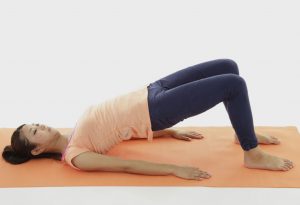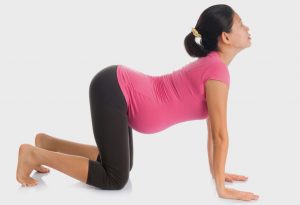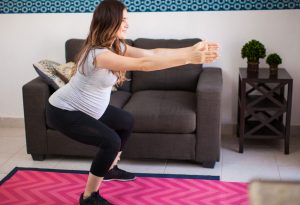In this Article
- Instructions to Follow Before Exercising During Pregnancy
- Best 10 Exercises to Do During Pregnancy for a Normal Delivery
- First Trimester Pregnancy Exercises For a Normal Delivery
- Second Trimester Pregnancy Exercises For a Normal Delivery
- Third Trimester Pregnancy Exercises for a Normal Delivery
- Benefits of Exercise for a Pregnant Woman
- When to Stop Exercise in Pregnancy
Physical exercises during pregnancy, contrary to the myths and beliefs of being harmful, are helpful for the mother’s health and increase the probability of a normal delivery. Performed in the right form and intensity, exercising during pregnancy is actually advisable.
Instructions to Follow Before Exercising During Pregnancy
Exercise is essential and very helpful during pregnancy, but a few vital instructions should be followed that can benefit both the mother and baby.
- Wear Loose and Comfortable Clothing: This ensures that circulation is not obstructed.
- Control the Room Temperature: A room that is too hot or too cold can affect your body temperature and harm the baby.
- Drink Plenty of Water: This ensures that you stay hydrated.
- Wear Comfortable Footwear: This provides stability.
- Warm up with Stretches: Initially doing some stretching exercises helps prevent aches and
- Don’t Exert Yourself: Don’t exercise if you are too tired.
- Avoid Standing Still For Long Periods: This may lead to pooling of blood and resultant swelling in the lower limbs.
Best 10 Exercises to Do During Pregnancy for a Normal Delivery
Performing exercises based on the phases of pregnancy can help the mother prepare for an easy and normal delivery, without causing any harm to herself and the child.
How to Warm Up
Doing a warm-up helps prepare your body for a workout by making the muscles flexible and reducing stiffness.
- Head tilt, both sides – A set of ten repetitions
- Head nodding, (up & down) – A set of ten repetitions
- Head rotations (both directions) – 1 set of five repetitions
- Arm swing rotations (clockwise and anti-clockwise) – A set of ten repetitions
- Shoulder rotation movements (clockwise and anti-clockwise) – A set of ten repetitions.
First Trimester Pregnancy Exercises For a Normal Delivery
The first trimester (initial three months) is the most vulnerable period and mothers are advised to avoid any tiring activity, which includes lifting heavy weights, extreme cardio or high-intensity workouts. Gentle exercises are permissible, but only after consulting your doctor.
1. Wall Slide
This exercise is helpful in stabilising your spine and lower abdomen when you experience a backache.
Steps:
- Stand with your back against the wall. Bring your feet to the front, away from the wall.
- Now, slowly drop your waist so that your thighs are parallel to the floor as if you are sitting on an invisible chair.
- Raise your hands above your head and rest them against the wall. Now, slowly pull them down on either side of your head, like you would during a shoulder-press. Repeat for ten counts.
2. Clam Shell
This exercise helps tone the muscles, abs, thighs, buttocks and pelvic floor. As your tummy grows through pregnancy, it is advised to do this exercise with your back against the wall.
Steps:
- Start by lying on the floor by your side with flexed knees and an arm below your head and the other supporting your body by touching the ground. Keep your heels one on top of another.
- Press your heels together and elevate your leg to the maximum possible height.
- Pause for a second and then return to the starting position. Repeat for five counts
- Repeat on the other side.
3. Hip Raises / Bridge
This exercise will support the lower back to accommodate the growing belly. It also strengthens the buttocks and helps during labour.

Steps:
- Lie flat on the floor with bent knees and place your palms under your hips.
- Gradually elevate your hips to bring the torso in line with the shoulders.
- Hold for a second and lower down to the initial position.
Walking is necessary during pregnancy, but avoid brisk walking. It helps pregnant women to be more flexible and avoids fat deposits in the body. Walking at least 30 minutes twice a day is adequate. During the first trimester, it is common to have some nausea, so having a light workout routine is highly advised. In the second trimester, the mother feels better, and this is a perfect phase for exercises that would help in an easy delivery.
Second Trimester Pregnancy Exercises For a Normal Delivery
Second trimester (13-27 weeks) or the honeymoon phase is relatively easier because symptoms of vomiting sensation usually resolve by this period. Abdominal cramps are common and movements of the baby are felt easily, as uterine contractions become frequent. Workouts in this phase are usually safe, but better done after a consultation with your doctor.
1. Downward Dog
This exercise is not recommended in late pregnancy, but helps pregnant women in the second trimester to become more flexible and stretch their body.
Steps:
- Take a cats posture by tucking the toes and spreading your fingers wide, press the floor with your fingertips.
- Bend forward and rest on your feet and palm with your fingers pressing firmly into the floor and forming an “A”.
- Bend the right knee and straighten it feeling the stretch.
- Bend the left knee and straighten it.
- Repeat as many times as you can comfortably.

2. Pelvic Tilt (Or) Angry Cat
This exercise strengthens the pelvis, soothes back pain during pregnancy, helps in labour and works towards easing the delivery process.
Steps:
- Get in a cats posture, with flat palms and pointed toes against the floor.
- While resting on all fours, bend your head back
- Arch your back so that your spine is curved.
- Hold the posture and return to the initial position gently
- Relax, and then repeat.
3. Lying Cobbler Pose
This helps relax your mind and body during pregnancy while stretching your body and improving flexibility.
Steps:
- Lie flat on a floor close to the wall, with legs stretched. Rest your feet on the wall.
- Stretch your legs in front of you as you sit on the floor. Use a blanket to sit on if you are uncomfortable
- Join the soles of both feet, hold your ankles and pull them close to your pelvis
- Relax, but refrain from pushing your knees down to the floor
- Exhale as you bend forward as far as possible.
- Hold for as long as comfortable, inhale, and sit up slowly
Third Trimester Pregnancy Exercises for a Normal Delivery
In the third trimester, heavy workouts must be avoided, as a heavy and strenuous activity like lifting heavy weights can cause complications like leakage of the amniotic fluid, for instance.
1. Butterfly Pose
This pose widens your hips and eases pain in the lower back.
Steps:
- Sit on the ground and bring the soles of your feet together, with the knees pointing outwards.
- Grasp your ankles (or feet) and draw your heels as close to your body as comfortable.
- Lean forward, hold the position, and breathe deeply.
2. Pelvic Stretches
Exercising the pelvic floor muscles is essential when you are preparing for labour. Kegel exercises for a normal delivery focus on strengthening the pelvic floor muscles. To isolate and exercise these muscles, try stopping the flow of urine without using your abdominal muscles, thighs or buttocks. For slow Kegel exercises, start by sitting with a straight back comfortably on the workout ball.

Steps:
- Slow Kegel exercise: Hold the contracted muscles for 3-10 seconds for 10 sets.
- Fast Kegel exercise: Contract and relax the pelvic floor muscles 25-30 times before relaxing for five seconds, and perform four sets of exercises
3. Yoga
Yoga during pregnancy for normal delivery is highly recommended for expecting mothers and there are plenty of forms and aasanas that can help increase the flexibility and endurance in an expecting mother. Some aasanas that can be done include:
Yastikasana (Stick pose):
- Lie down with your arms stretched above your head and keep your legs straight.
- Keep the arms and legs as close to each other as possible.
- Hold for as long as it is comfortable.
Vakrasna (Twisted pose):
- Sit on the floor with your legs stretched in front of you.
- Bend your left knee, placing the left foot near the right knee.
- Inhale and raise your arms to shoulder height.
- Exhale and twist as much as you can comfortably, and grasp your right knee with the right hand. Hold for a while.
- Do the exercise in reverse.
Konasana (Angle pose)
- Sit comfortably on the floor.
- Press the soles of your feet together and draw them towards your body, slowly.
- Lean forward as much as you can comfortably
- Hold for five breaths
4. Squats
Squats are important, as they help in the contraction and loosening of the pelvic muscle and help reduce delivery pain. Taking position with the support of a gym ball or holder will give a good pressure to the pelvic area and thighs.

Steps
- Breathe and bend down to acquire a sitting position.
- Wait for a second, and return to your starting position.
- Repeat the squat, now keeping your elbows placed inside your thighs, and gently try to open your hips by pushing them back.
- Slowly return to the standing position with feet well supported.
Benefits of Exercise for a Pregnant Woman
Exercising in pregnancy offers a range of benefits for the mother and ensures higher chances of normal safe delivery. It also provides the following benefits,
- Prevents weight gain
- Prepares a mother’s body for a normal delivery
- Reduces labour pain
- Improves circulation and keeps the heart rate stable
- Improves your stamina and makes you more flexible
- Helps you recover quickly, post-delivery
- Reduces the chances of high blood pressure and pregnancy-induced diabetes
When to Stop Exercise in Pregnancy
Generally, about half an hour of exercise is adequate and recommended. An expectant mother must stop when the following is observed:
- Fatigue
- Pre-existing blood pressure problems, asthmatic conditions, cardiac disorder, diabetes etc.
- Vaginal bleeding
- History of a preterm delivery or wasted delivery
- Experience augmented contractions shortly after exercising.
A proper exercise routine for pregnant women can be very helpful in making normal delivery more likely, additionally reducing labour time and its pain. To ensure safe practices, one should ask the doctor about exercising in detail and perform the exercises under supervision.









